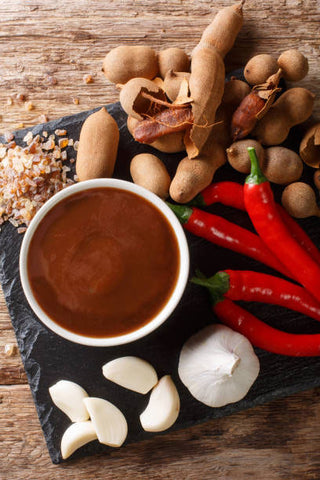Who hasn't tried a delicacy that contains tamarind in any of its versions? In the holiday season with the punch, for example, like tamarind water, or in the sweet enchiladas so traditional in our country.
But we hardly ever wonder where our food comes from, or its ingredients. Do you want to know where this fruit comes from? His story will surprise you.

Where does it come from?
Although there are sources that cite that tamarind comes from the tropical part of Africa, while others claim that it has its origin in India, this evergreen tree is mostly produced in India worldwide, with an estimated 300,000 tons annually, followed by Thailand and in third place, Mexico.
In India, as in the Philippines, the tamarind leaf is also used for cooking, although the pod is more commonly used for cooking. In India, they are prepared from waters, sauces, soups, curries, and dosas, small very traditional empanadas from this country, among many other dishes.

On the African continent, being more common in Senegalese cuisine, it is used, for example, to season Tô, also called Akoumé, a basic dish that resembles white atole, although a little thicker, almost with porridge texture. It is also used in waters and sauces.
In some countries the pulp is used medicinally and even to polish metals, and even the wood of this tree is used for carpentry.
How did you get to Mexico?
Like many other foods belonging to our gastronomic heritage, this pod arrived in our country brought by the Spanish during the colonial era. Its cultivation was so successful that it spread throughout the tropical zones of Mexico, especially in the areas near the Pacific.
Currently, the states of Jalisco, Colima and Michoacán are the largest producers of this plant in our country, even exporting to the north of the continent.

What is it?
It belongs to the same family as beans, broad beans, lentils; it is a legume, although it is much larger than the previous ones, in addition to the pod that does not open lengthwise like others, but is brittle and contains the pulp that we normally use in our preparations.

The plant begins to produce fruit between 3 and 4 years old, reaching its highest production between 10 and 15 years old, producing between 50 and 100kg of harvestable fruit, and can reach up to 18 meters in height.
Common uses of tamarind
Every part of the tamarind can be used, here are some examples:
Did you know that the tamarind had so much history and so many uses? If you would like to know more about this peculiar fruit and also discover incredible recipes, leave us your comments on social networks!

For now, we recommend reaching for your package of tamarind to be ready for the recipes we will present you. You can find the best quality tamarind from Don Zabor at Walmart, Superama, Bodega Aurrera, H-E-B, laComer, CityClub and Alsuper.